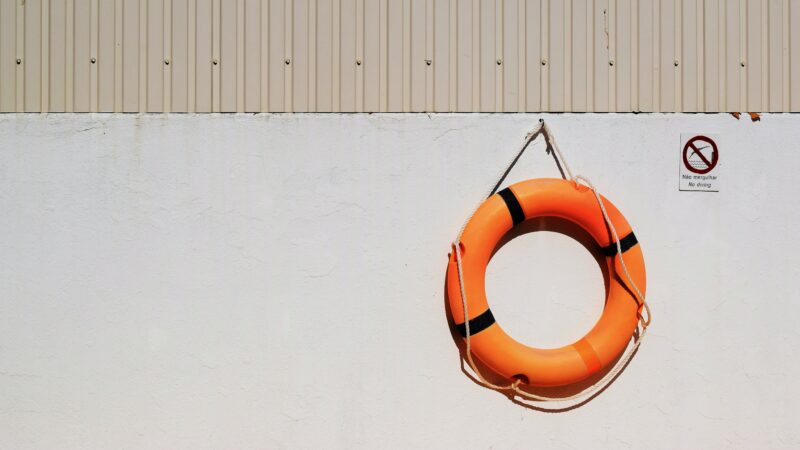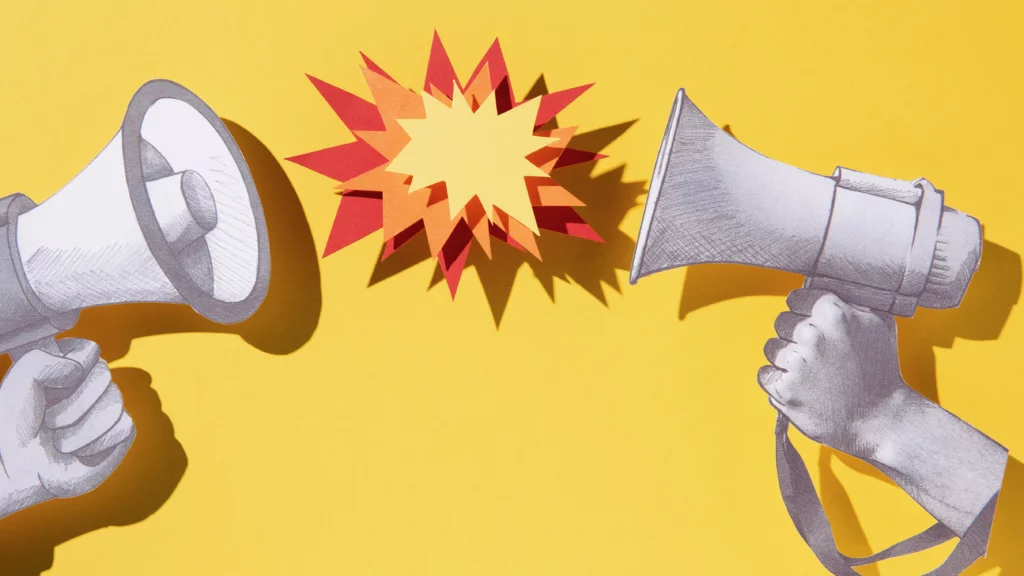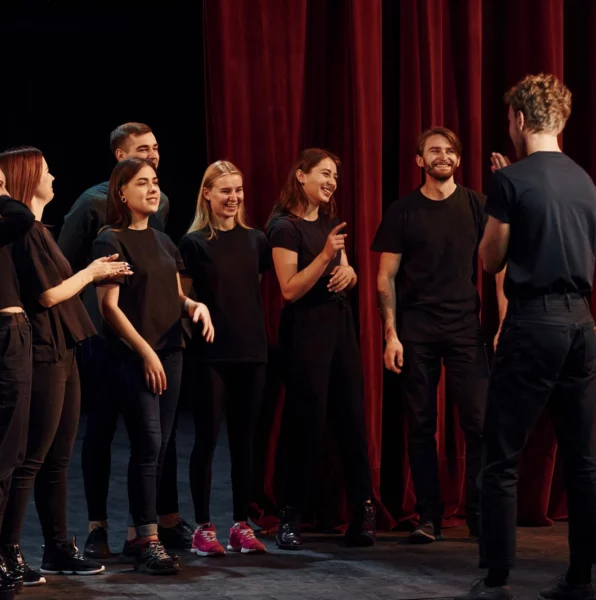Institutions often applaud public engagement, until the backlash begins. Then what? At a Berlin workshop, researchers explored how to move from awareness to action.
When scientists are targeted, what helps?
A researcher receives anonymous death threats after appearing on TV. A climate scientist is publicly discredited by a powerful politician. A young academic switches research topics to avoid online harassment. Such stories are increasingly shared by the research community and could signal growing hostility towards science.
In June 2025, a co-creative workshop was organised by the KAPAZ project (‚Capacities and Competencies in Dealing with Hate Speech and Hostility towards Science‘)* to focus on the changing landscape of antagonism towards science in Germany and globally. On the day, researchers and science communication practitioners met at the Alexander von Humboldt Institute for Internet and Society in Berlin to examine both external attacks and bullying within academia.
Chris Marchesano from the Climate Science Legal Defense Fund set the tone of urgency when he noted that, under Donald Trump’s leadership, attacks on science had transitioned from overt censorship to more insidious forms. „These shifting tactics,“ he explained, „now include budget cuts and personnel purges that gut scientific agencies.“ This trend has taken up speed, with attacks accelerating in the early months of Trump’s second term. Many participants expressed concern about the changing political climate and its potential impact on their research efforts. A key question for the future is which policies will make science more resilient to anti-democratic influences.
However, hostility towards science is not confined to political influence or hate on social media. Morteza Mahmoudi, a precision health researcher at Michigan State University, addressed the issue of academic bullying, highlighting the systemic structures that enable perpetrators to flourish. “Research environments often enable bullies to thrive by using bullying as a career tool.”, he said. One effective solution to bullying could be to bring in external stakeholders and tie institutions‘ reputations to an anti-bullying record.
How does hate influence science communicators?
Throughout the workshop, researchers provided brief inputs that illustrated the manifold contexts of science hostility.
Clemens Blümel from the German Centre for Higher Education Research and Science Studies presented findings from a representative German study. He outlined different types of attacks, which range from social media harassment to threats of violence. While severe attack were rare, he reported that certain fields, such as sociology, saw a higher rate of threats. Notably, many scientists responded not with retreat, but with increased engagement.
However, Atte Oksanen from Tampere University noted that „unchecked hate normalises“, particularly for professionals in the public eye, such as scientists, journalists and politicians. A representative study he shared had found that 30 percent of researchers had experienced some form of harassment[1]. Another Finnish survey reported that a third of respondents had experienced attacks[2].
Conflict does not deter scientists from communicating in online spaces, said Ashley Anderson, a science communication researcher from Colorado State University. She examined the motivations behind scientists‘ engagement in the correction of misinformation. Despite the hypothesis that conflict might silence researchers, her findings suggest otherwise.
Not only do researchers continue their communication efforts, they are also in favor of a healthy debate culture in academic contexts. Referencing a large-scale vignette study[3], Paula-Irene Villa Braslavsky, a sociologist at LMU Munich, showed that when controversial scenarios are described, very few experiment participants would cancel a fictitious contentious speaker, for example.
Blind spots and open research questions
In a World Café discussion participants noted that research on hostility in science communication remains fragmented and anecdotal. Although there are general surveys of public opinion and exploratory studies of populism and misinformation, in depth, long-term research is lacking. „The research field [as a whole] is a massive blind spot,“ one participant remarked.
Attendees identified key research gaps: What triggers hostility? How can criticism and harassment be distinguished from one another? What role do institutions play in enabling or mitigating attacks? Crucially, they also asked: Who are the perpetrators, and what do we know about them?
The workshop group emphasised the need for comparative research at a European level. There was also a call to bridge the gap between theory and practice. To facilitate this, mutual learning between institutions could be encouraged. Participants also prioritised strengthening institutional responses.
The importance of institutional support
During the final brainstorming session led by Iris Geigenmüller and Victoria Shennan from the Berlin School of Public Engagement and Open Science, participants shared ideas of how institutions can progress from awareness to action.
Participants identified several obstacles, including limited financial and staff capacity and high reporting thresholds. Institutional ambivalence was also described as a recurring issue. Attendees perceive a willingness to tolerate harassment, when perpetrators bring funding to the institution. While many universities expect researchers to communicate publicly, they often fail to provide sufficient protection or resources, some said.
Proposed solutions included setting up dedicated task forces, creating national support networks and making researcher protection a requirement of funding frameworks. As one participant noted, „Prevention saves money, especially compared to the cost of legal cases.“ They added that universities „can’t afford not to be prepared“.
Meanwhile, Josephine Schmitt from the Center for Advanced Internet Studies shed light on the ‚invisible labour‘ undertaken by many science communicators. Based on in-depth qualitative interviews with planetary health researchers, she described institutional support as minimal and inconsistent. She noted that legal departments were perceived as „not very supportive“, while emotional support and practical help often came from peers rather than institutional structures.
One of the most urgent needs identified was a system of independent support, particularly for those facing internal hostility. Institutions must pool resources and clarify responsibilities. Good practice examples included the German Scicomm Support and the Dutch SafeScience initiative.
Finally, Finnish historian Oula Silvennoinen offered a sobering reminder. „Harassment aims to isolate and silence its targets,“ he said. „The goal of harassment is to make the target feel alone, so we have to stand together.“ Addressing the issue requires transnational cooperation, proactive policy and collective support.
“When qualified experts leave the stage, we lose voices that matter,” sports journalism researcher Daniel Nölleke remarked. Ensuring that these voices are protected online, in academia and in the public sphere remains an ongoing task.
* Wissenschaft im Dialog is a partner of the KAPAZ project and one of the coordinators of Wissenschaftskommunikation.de.
[1] Hate and harassment in academia: the rising concern of the online environment
[2] Safeguarding The Freedom of Expression of Researchers and Experts
[3] Akademische Redefreiheit: Kurzbericht zu einer empirischen Studie an deutschen Hochschulen






